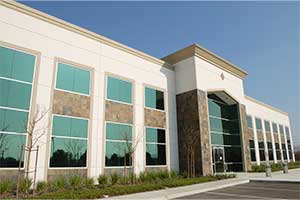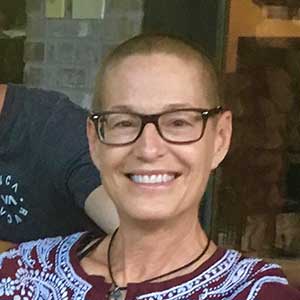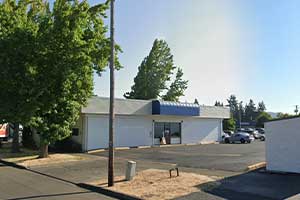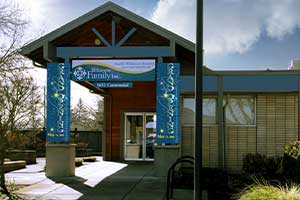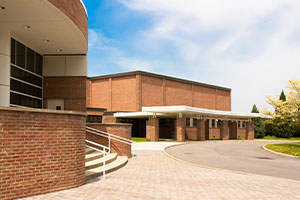Skip To Rehab Listing
Drug and Alcohol Rehab Settings and Methods in Springfield
Drug and alcohol abuse impacts people of all ages, genders, and walks of life. The alcohol and drug rehab facilities and resources, such as outpatient individual counseling, inpatient detox programs, long term drug rehab facilities, inpatient addiction treatment centers, short term treatment programs, are intended to offer high-quality care to anyone who has a problem with addiction, no matter their personal situation.
Drug and alcohol rehab programs in the Springfield area are not all the same. They offer a variety of approaches, such as vocational rehabilitation services, relapse prevention, cognitive/behavior therapy, behavior modification, dual diagnosis drug rehab, motivational interviewing, that allow patients to address their alcohol and drug addiction in the way that is most effective for them.
Special Services for Substance Abuse Recovery
Despite the widespread presence of substance abuse, each person who struggles with alcohol and drug abuse problems has their own unique circumstances that call for a personalized approach. That is why the rehab programs in Springfield offer several special services such as residential beds for client's children, transgender or (LGBT) clients, clients with HIV/AIDS, persons with serious mental illness, child care for clients children, housing services.
Accepted Treatment Payment Types
Patients and their families should not postpone recovery because of concerns about money. Rehabs provide several options for payment, including the following: cash or self-payment, private insurance, military insurance, payment assistance, state welfare or child and family services funds, state corrections or juvenile justice funds. Substance abuse treatment facilities can guide patients and their loved ones toward the payment plans that will put rehab within their reach.
Individuals who struggle with drug and alcohol dependency should not hesitate to take advantage of the many resources accessible in Springfield, OR..
Commonly Asked Questions about Addiction and Treatment
Is substance abuse higher in the lgbtq+ community?
Yes, studies have indicated that rates of substance use and substance use disorders are indeed higher in the LGBTQ+ (lesbian, gay, bisexual, transgender, queer, and others) community compared to the general population. This disparity is believed to be related to a variety of factors, including the stress and stigma associated with identifying as LGBTQ+.
Here's a closer look at some of the related factors and statistics:
- Minority Stress: Minority stress refers to the chronic stress faced by members of a marginalized group, such as the LGBTQ+ community. This includes dealing with prejudice, societal stigma, discrimination, and the process of coming out. This added stress can increase the risk of substance use as a coping mechanism.
- Mental Health: There are higher rates of mental health disorders, such as depression and anxiety, among LGBTQ+ individuals, often as a result of minority stress. Mental health disorders are a known risk factor for substance use and substance use disorders.
- Social Environment: Substance use is often more normalized in some LGBTQ+ social settings, such as bars and clubs, which can increase the likelihood of substance use and addiction.
- Access to Care: LGBTQ+ individuals may face barriers to receiving substance use treatment, such as discrimination, lack of LGBTQ+ inclusive treatment programs, and fear of stigma.
According to the Substance Abuse and Mental Health Services Administration (SAMHSA), adults who identify as lesbian, gay, or bisexual were more than twice as likely as heterosexual adults to have used illicit drugs in the past year. Transgender individuals also experience higher rates of substance use and substance use disorders compared to their cisgender peers.
It is important to note that while substance use is a significant issue within the LGBTQ+ community, not all individuals within this community use substances or struggle with substance use disorders. A comprehensive, culturally competent approach is needed to address substance use in the LGBTQ+ community, which includes providing LGBTQ+ inclusive prevention and treatment programs, addressing the underlying issues like discrimination and stigma, and improving access to mental health care.
Suicide risks from drug abuse among lgbtq+ youth
Substance abuse significantly increases the risk of suicide, particularly among vulnerable populations such as LGBTQ+ (lesbian, gay, bisexual, transgender, queer, and others) youth. This heightened risk stems from a combination of factors associated with both substance abuse and the unique challenges faced by LGBTQ+ youth. Here's a closer look at these factors:
Mental Health Disorders: Substance abuse often co-occurs with mental health disorders such as depression, anxiety, and bipolar disorder, which are known risk factors for suicide. LGBTQ+ youth experience these mental health conditions at higher rates than their heterosexual and cisgender peers, partially due to the minority stress they face.
Minority Stress: Minority stress refers to the chronic stress experienced by marginalized groups, including LGBTQ+ individuals. It can include experiences such as discrimination, stigma, bullying, and family rejection, which can increase feelings of hopelessness and contribute to both substance use and suicidal ideation.
Substance Use and Suicidal Behavior: Substance use can lead to increased impulsivity, decreased inhibition, and intensified feelings of despair, making a person more likely to attempt suicide. It can also exacerbate feelings of isolation and hopelessness, further increasing the risk.
Social Isolation: Many LGBTQ+ youth feel socially isolated, either because they are not out to their peers or because they face rejection after coming out. This isolation can lead to increased substance use and a higher risk of suicide.
Family Rejection: Family rejection related to an individual's sexual orientation or gender identity can lead to increased substance use and heightened suicide risk. LGBTQ+ youth who do not receive support from their families are particularly vulnerable.
Lack of Access to Mental Health Services: Many LGBTQ+ youth struggle to access mental health and substance use treatment services, which can help manage risk factors for suicide. Barriers to access can include lack of insurance, stigma, and a shortage of providers who offer LGBTQ+-inclusive care.
Intersectionality: LGBTQ+ youth who belong to other marginalized groups (e.g., racial/ethnic minorities) often face additional layers of discrimination and stress, which can further increase their risk of substance abuse and suicide.
Efforts to prevent suicide among LGBTQ+ youth include providing access to culturally competent mental health and substance use treatment, fostering supportive environments in schools and communities, and advocating for policies that protect LGBTQ+ youth from discrimination and harassment. It's also crucial to provide support for families of LGBTQ+ youth, as family acceptance has been shown to protect against suicide risk.
How long does it take for the treatment of drug addiction?
"The duration of treatment for drug addiction can vary significantly depending on several factors, including the individual's unique needs, the severity and type of addiction, and the chosen treatment approach. There is no universally prescribed timeline for addiction treatment, as each person's journey to recovery is different. However, some general timeframes can be considered when discussing drug addiction treatment:
Detoxification: The initial detoxification process, during which the body clears itself of drugs and toxins, can range from a few days to several weeks, depending on the substance involved and the individual's physiological response.
Inpatient or residential treatment: Inpatient or residential treatment programs, which provide intensive, structured care in a controlled environment, typically last between 28 days and 90 days. However, some individuals may require extended stays of six months or longer, depending on their progress and specific needs.
Outpatient treatment: Outpatient treatment programs, which offer therapy and support while allowing individuals to continue living at home, can vary in duration and intensity. Some programs may last for several weeks or months, while others may continue for a year or more, with sessions becoming less frequent over time as the individual progresses in their recovery.
Aftercare and ongoing support: Recovery from addiction is a lifelong process, and ongoing aftercare and support are crucial for maintaining long-term sobriety. Aftercare may include continuing therapy, attending support group meetings, or participating in sober living communities. The duration of aftercare and ongoing support can vary based on individual needs and may continue indefinitely.
Research suggests that longer durations of treatment are generally more effective in promoting lasting recovery. The National Institute on Drug Abuse (NIDA) recommends a minimum of 90 days of treatment for most individuals, as shorter durations have been associated with higher relapse rates. However, it is essential to recognize that each person's path to recovery is unique, and the most effective treatment plans are tailored to their specific needs, goals, and circumstances."
